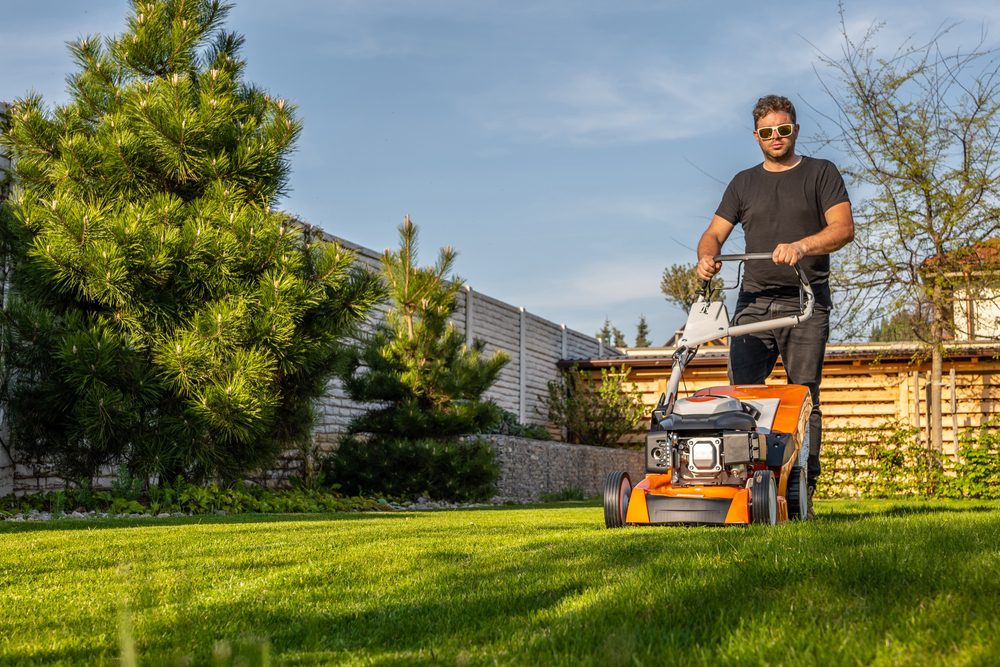Here’s how To Prepare Your Yard for The Winter!
Now, depending on where exactly you live in the country, this article might prove to be helpful or not. If you ask me, every homeowner should know these helpful tips on how to prepare their yard and garden for the long and cold season.
In some places, we might even be talking about snow, and in others, it’s just the cold and the overall ugliness that makes this season so unbearable (sorry for winter lovers, I know you’re out there).
Now that winter is right around the corner, some of these tips might require immediate action. Are you ready? Let’s see what’s on our agenda for the upcoming weeks:

Mow the lawn.
Truth be told, it doesn’t get simpler than this: you have to start by mowing your lawn. To be more specific, for the types of grass that usually grow in northern climates, you might want to mow right before the ground freezes.
Why? Well, because the final cut should be the minimum height that’s generally recommended for most varieties of grass. The last mow will also take care of any lawn litter and reduce any chance of fungus issues when the spring comes.
Aerate the lawn.
If you have high-traffic areas on your lawn, you might want to aerate the compacted spots. This way, it will create a better-growing environment for those wonderful grass roots.
…and fertilize the lawn.
Make sure you don’t forget to fertilize the lawn in the fall. Moreover, you should use a mix that specifically has a lower amount of nitrogen and more potassium in order to help the roots fend off the deep winter chill.
Remove all the leaves.
We can all agree that raking is a drag, but you still have to remove the leaves from your lawn to prevent smothering it. If you ask The Home Team, we’ll tell you that mulching is a much easier option.
At the same time, you can’t really leave everything on at the last minute because the mulch will be too thick and it might also smother the grass.
Treat for snow mold.
If you live somewhere where the spring snowmelt causes something known as “snow mold”, or any other fungi that might grow on your lawn, then you have to consider this too before preparing your garden.
You can treat the grass with a lawn fungicide. In fact, we’d highly recommend you do that to keep your lawn as healthy as possible for the warmer months.

Mulch the flower beds.
Unless you live somewhere with a mild Mediterranean or even southern climate, it might be way too late to fertilize your garden beds by late fall and early winter, meaning November and December.
However, this doesn’t mean that it’s not the ideal time to mulch them. If you still have fall leaves left over, then you also have excellent free mulch right in front of you.
Just spread them at the base of your plants, or even run the lawnmower over a small pile of leaves. Then, carefully chop them up and make a finer leaf mulch. Other types of mulch could also include wood chips, bark, and crushed pine needle mulch.
Insulate the perennials.
Besides mulching to prepare the lawn for winter, if you live somewhere where you experience freezing temperatures, then you probably need to insulate your plants, too.
Well, spreading a thick layer of leaves or straw at the base of your plants is actually quite easy and inexpensive.
Protect the shrubs.
If you live in an area with consistently low temperatures and heavy snowfall, then you might want to protect larger shrubs by carefully wrapping them in burlap.
This is especially helpful for plants that border your yard and might use a bit of protection from snowplow spray, which also includes salt from the roads.
Dig up all your delicate plants and tubers.
If you haven’t dug up your plants and tubers yet, make sure you do that now. Moreover, you want to carefully store any delicate plants and tubers that won’t resist the winter weather.
You might want to dry them out after digging, then store them in a crate or terracotta pot in shavings and sawdust.
Plant the bulbs.
November is not too late to plant spring-blooming bulbs. As a matter of fact, you could easily plant them any time before the ground freezes, which could be as late as the beginning of December.
Empty and store the pots.
Remove all the plants from pots and empty the soil into an existing raised bed to properly prepare your yard for winter. Soil in pots will lose nutrients quite rapidly, so it’s highly important to change it out every spring.
Rinse the pots, let them dry out, and then stack them in your garden shed or even your garage.
Trim the shrubs and perennials.
Any perennials that didn’t get the chance to prune already, whether we’re talking about ornamental grasses or shrubs with spectacular fall colors, should be trimmed up now.
And also, trim the smaller trees!
Pruning in the fall will stimulate growth in the spring. Pruning once the leaves have fallen from any deciduous trees or even large shrubs will allow you to see the exact shape of the plant.
You could easily shape evergreen trees without worrying about new growth until the spring.
Remove the branches and prune large trees.
Remove all the dead branches that are precariously hanging around and could ultimately fall down during a stronger windstorm and damage your house.
This goes even further if your tree is very close to your home or roofline. If you can’t do it yourself, just hire a tree removal service that will safely remove the branches and get rid of trees when needed.
Put away the hoses.
Even if you don’t live in an area where you could experience freezing temperatures, it’s still a good idea to wrap up and store the hoes and any other irrigation equipment you might not use in the winter.
Winterize the outdoor plumbing.
For those of you who live where temperatures dip below freezing point, properly winterizing your outdoor watering system might prove beneficial.
Just turn off the water to your outside spigots and cover them with insulation. This way, you’ll properly prepare your yard for winter’s chilly temperatures.
Winterize the drip irrigation system.
The same as with outside spigots, it’s very important to winterize your drip irrigation system, too. Moreover, you should do it two to three weeks before the first frost.
Otherwise, the water left in your system might swell, freeze, and cause leaks. You might have to cut off the water supply and drain the existing water by blowing air through the system.
Winterize the sprinkler system.
The convenience of an automatic sprinkler will suddenly turn into an inconvenience if you have to deal with burst pipes. Winterize the sprinkler system by shutting off the outdoor water supply, removing the entire faucet assembly, and draining the system. Moreover, you might have to insulate any above-ground parts.
The cost to winterize a sprinkler system might range from $75 to $150, and it’s something that should be done by a local landscaper or even a plumber.
If you found this article useful, we have other things you might want to check out, too: Are String Of Turtles Toxic To Cats? What You Need to Know









